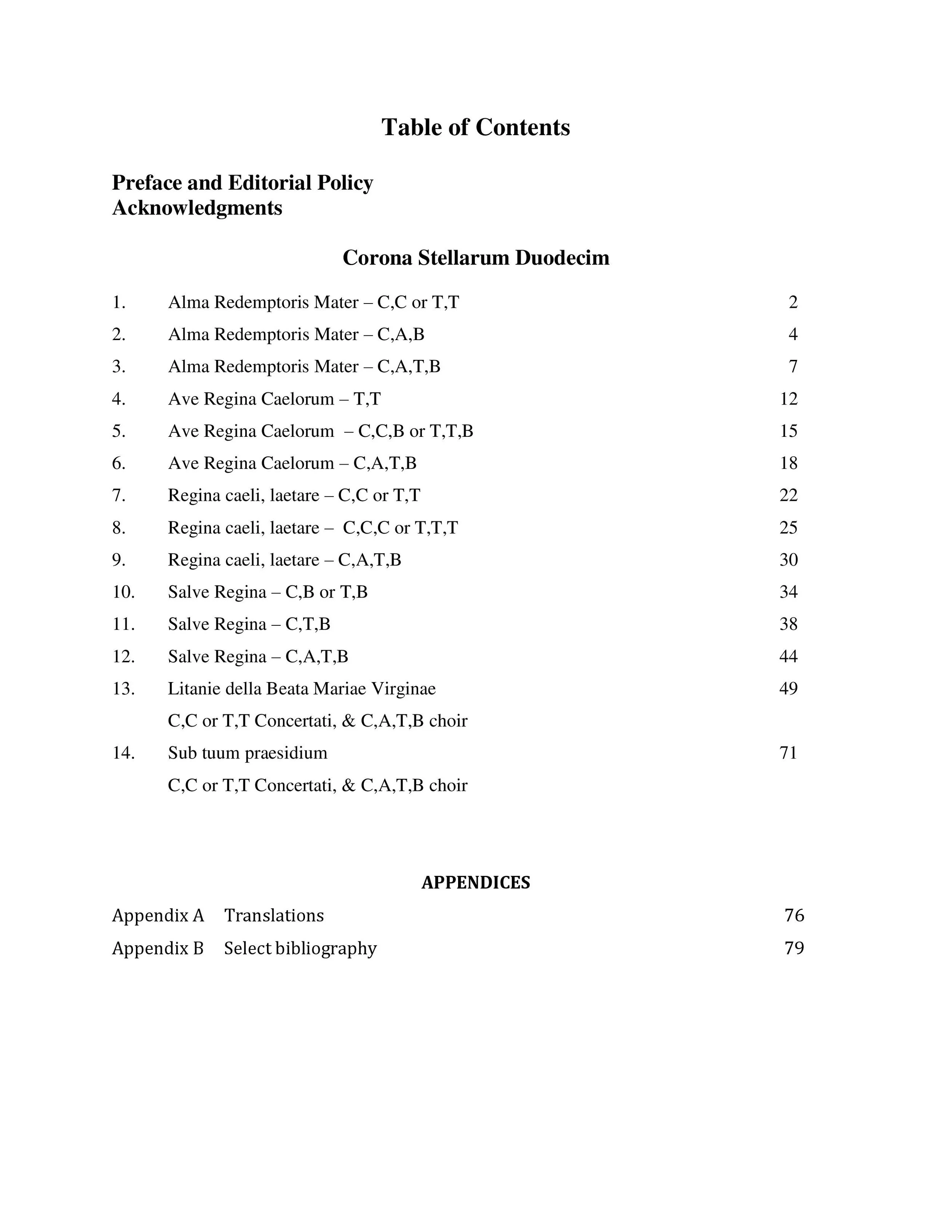Two 17th century publications by the Italian/Czech composer Giovanni Battista Aloisi (c.1600-1665) are now available in modern editions. In addition to the complete volumes, individual motets in PDF format can be purchased for $5.00 each upon request sent via “contact” portal.
GIOVANNI BATTISTA ALOISI: CORONA STELLARUM DUODECIM (1637). Motets for Two, Three, or Four Voices and Basso Continuo.
ISBN 978-0-9962221-4-3. 79 pages. Spiral-bound printed copy: $35.00.
Also available as a PDF download: $35.00.
The “Crown of Twelve Stars” collection contains fourteen motets celebrating the Virgin Mary: three settings each of the four seasonal Marian antiphons, plus one setting of Sub tuum praesidium. A splendid treatment of the Litany of Loreto text for four-voice choir and two soloists rounds out the edition.
GIOVANNI BATTISTA ALOISI: COELESTIS PARNASSUS (1628). Motets for Two, Three, or Four Voices with Basso Continuo.
ISBN 978-0-9962221-5-0. 127 pages. Spiral-bound printed copy: $40.00.
Also available as a PDF download: $40.00.
Aloisi’s opus 1 print of 1628 contains twenty-four motets suitable for a number of liturgical celebrations throughout the year. Featuring different combinations of voices, a few of the motets also include parts for two violins.
The career of Giovanni Battista Aloisi (Alouisi, Aloysius) covered a substantial geographic area, from his birth in Bologna around 1600 to his death in Brno in 1665. A peripatetic way of life was not unusual for musicians or members of religious orders, though, and he was one of many composers who helped spread early Baroque musical styles quickly from northern Italy to other parts of Europe.
Recent research by Czech musicologist Dr. Eduard Tomaštík (see bibliography in Appendix B) yields the following information about this composer:
”Giovanni Battista Alouisi was born in Bologna around 1600, [where he] also entered the Order of Friars Minor. His first musical position was the organist of the Basilica of St. Anthony in Padua. Then he worked briefly as director of city church music [the Cathedral] in Sacile near Udine. In 1628 he published three music collections in Venice, and the same year he went to Prague to Minorite St. Bonaventure’s College, where he continued his theological studies. Around 1631 he entered the service of the Bishop of Olomouc Francis Cardinal Dietrichstein, where he worked as the “maestro di cappella”, Italian secretary and theologian.
“In 1635 Alouisi was appointed the Custos of the Minorites in Brno for one year. After the cardinal’s death Alouisi remained in the service of the Dietrichsteins as an Italian secretary and theologian. Even though he did not hold any formal musical function, he kept composing, which resulted in three music prints from the years 1637-1640, which were published again in Venice.”
Of the six collections of church music printed in Aloisi’s lifetime, two of them exist as complete partbook sets in the Christ Church Oxford Library: Coelestis Parnassus (1628), and the source of this edition, Corona Stellarum Duodecim (1637). “Corona Stellarum Duodecim” refers to the crown of twelve stars which the Virgin Mary wears in her role as Queen of Heaven (Revelation, Chapter 12). The collection consists of three settings each of the four seasonal Marian antiphons, plus a setting of the ancient Marian prayer, Sub tuum praesidium, and the more recent Litany of Loreto. A Marian antiphon concludes the daily office of Compline. Thus, a collection dedicated to settings of these texts in the latest sacred music style for a variety of voice combinations must have been welcomed as eminently practical.




